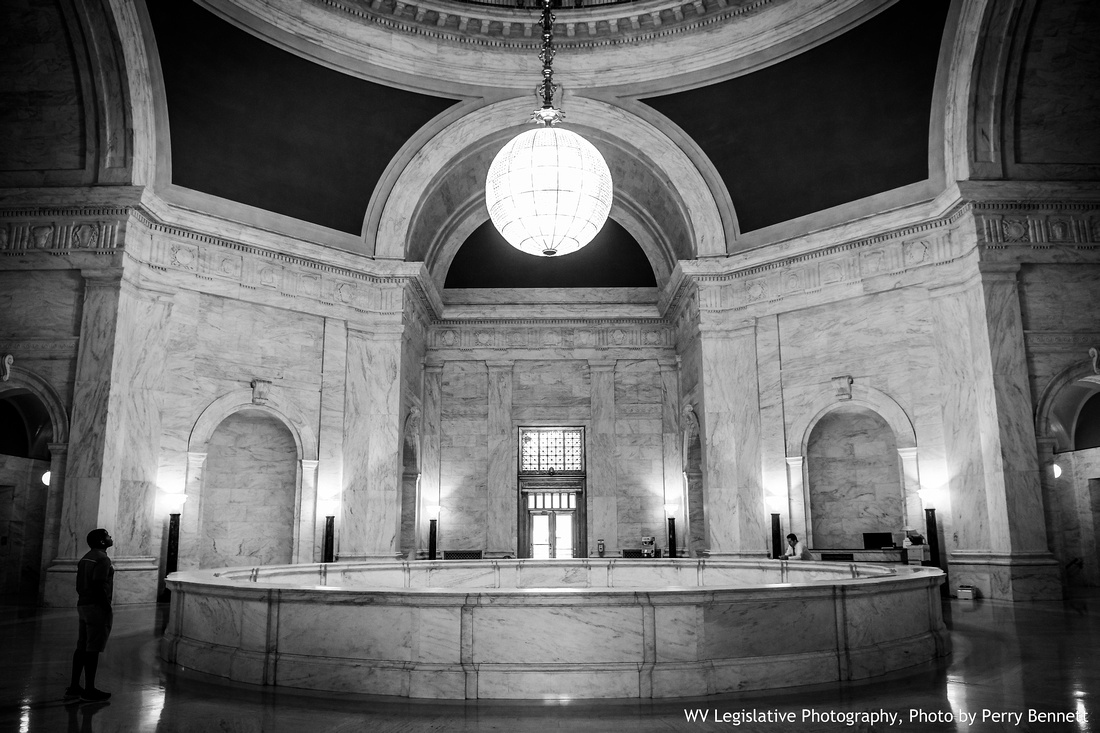| The Legislature’s Joint Committee on Government Organization, meeting Sunday in Parkersburg, heard reports about occupational licensing and the nation’s shortage of ophthalmologists.
During the meeting in Parkersburg, Dr. Edward Timmons, Service Associate Professor of Economics and Director of the Knee Regulatory Research Center at the John Chambers School of Business and Economics at West Virginia University, made the presentations.
Occupational Licensing
Dr. Timmons’s discussed economic considerations relating to occupational licensing.
In terms of an economic model, more stringent licensing requirements may have a supply-and-demand component, he said, reducing access to services by limiting ease of licensure, especially licensure transportability, which may result in “underemployment” of professionals who await clearances to practice their professions.
Dr. Timmons’s central point, however, was that “there is no evidence that licensure improves quality.” Rather, he said, licensure may enforce “rigidity” and is often typified by delay, paperwork, and lessened supply of professionals who may have to complete additional training to secure licensure, reducing “mobility” of licensed persons from other states who might, due to spousal transfer, want to practice in another state or locale.
He posited the greater question is one that focuses on “more emphasis on outputs than inputs,” meaning initial training.
Dr. Timmons, in discussing state compact approaches for licensure, noted the approach is incremental and often results in an emphasis on inputs as compared to universal recognition of endorsements or occupational licensing reciprocity, which 26 states recognize.
Noting the state’s emphasis to reform licensure, Dr. Timmons said most West Virginia legislative emphasis has not affected Chapter 30 registrations — most of which impact professionals, such as accountants and psychologists.
He said West Virginia has 173 licensed occupations compared to larger states, such as Texas’ 199 occupations and Kansas’ 136 licensed occupations.
The House of Delegates passed a bill in 2021 allowing for transfer of out-of-state occupational licensing. The measure, however, was not taken up by the Senate.
Eye-Care Professionals
Dr. Timmons began saying, “We don’t have enough ophthalmologists,” noting a projected 12% decline in the number of eye-care specialists throughout the nation.
In terms of an economic frame, Dr. Timmons posited whether optometrists, specially trained eyecare professionals who do not have medical degrees, could provide expanded eyecare services given that ophthalmologists perform major medical and surgical procedures.
In West Virginia, optometrists can use lasers for diagnostics but not for therapeutic treatment of eye and vision conditions.
Dr. Timmons said optometrists could alleviate the projected shortage of ophthalmologists without a decline in the efficacy of medical services.
In terms of demand, Dr. Timmons said an aging state population needs age-related services for cataract and glaucoma treatment or surgeries, which are increasingly being done through laser intervention.
Thus, supply and demand center on whether optometrists could provide those services given the specialized training they increasingly receive when pursuing optometrist licensure.
Dr. Timmons cited two studies regarding the efficacy of optometrists providing laser interventions.
A Knee Center study found two “negative outcomes” with the practice, although he said the study was not comprehensive.
Placing that study within context of an earlier Oklahoma study, he said that research concluded there were some consequential medical efficacy questions, namely that laser interventions as completed by optometrists included “repeat” laser interventions.
In that the study is dated, Dr. Timmons said optometrists are increasingly being trained to provide laser interventions, especially as enhanced by technological advancements, including AI medical applications. He said 11 states, including neighboring Kentucky and Virginia, allow optometrists to use lasers to treat certain conditions, such as post-cataract haze, minor glaucoma treatments, and refractive laser surgery, also known as LASIK, although only Alaska and Oklahoma allow optometrists to perform LASIK surgeries that treat nearsightedness, astigmatism, and other conditions.
“Historically, we’ve seen a really big shift in what optometrists are able to do and what they’re able to provide to patients,” Dr. Timmons said. “If you give patients the opportunity to get treatment from other providers, they’re likely to get that treatment.”
Using another economic analogy, Timmons said, “the benefits outweigh the costs” and that greater reliance on optometrists “does, in fact, reduce healthcare costs” without compromising patient medical care.
Delegate Diana Winzenreid of Ohio County wanted to know whether or how ophthalmologists would accept optometrists providing enhanced services.
Dr. Timmons said historical pushback, taken to a logical extreme, is tantamount to “everyone (having) to follow the same pathway … to treat patients,” and it is not a competition story. He said optometrists are not taking business away from ophthalmologists. |



